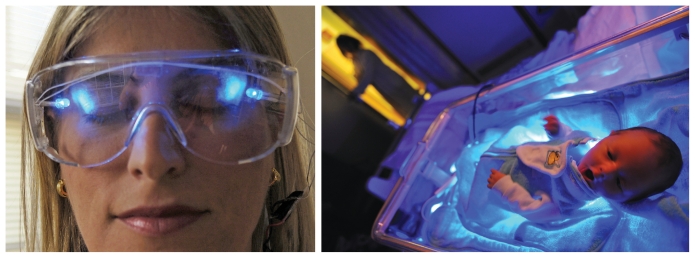Blue light–emitting goggles, panels, and other devices are used to treat problems such as sleep disorders, jet lag, seasonal affective disorder, and premenstrual syndrome. But blue light doesn’t work solely through ocular stimulation; the shorter wavelengths can penetrate skin—this is how blue light is used to treat neonatal jaundice, in which the infant’s liver is unable to clear the normal hemolysis by-product bilirubin. Bilirubin builds up in the blood and enters body tissues, making the eyes and skin appear yellow. Blue light penetrates the skin and converts bilirubin into forms that can dissolve into the blood and be excreted in urine. The process repeats as untreated bilirubin continues to deposit into tissues from the blood, until most or all the bilirubin is converted.

An official website of the United States government
Here's how you know
Official websites use .gov
A
.gov website belongs to an official
government organization in the United States.
Secure .gov websites use HTTPS
A lock (
) or https:// means you've safely
connected to the .gov website. Share sensitive
information only on official, secure websites.
